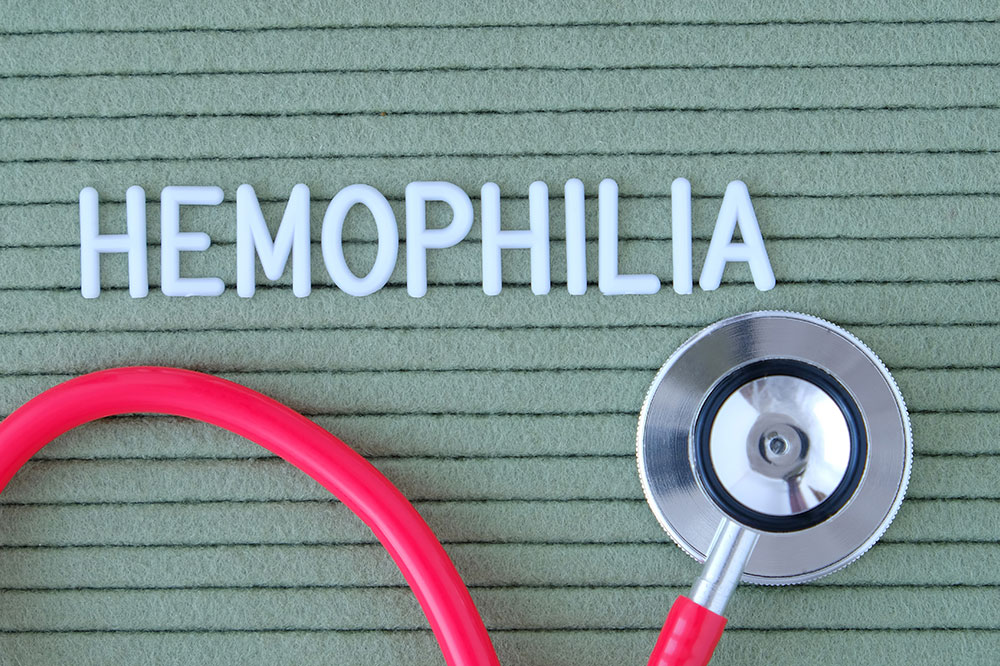Comprehensive Guide to Hemophilia Management: Strategies to Reduce Bleeding Risks and Improve Well-being
Discover comprehensive strategies to manage hemophilia effectively, including modern treatments like recombinant factor VIII and Hemlibra, nutritional guidance, lifestyle adjustments, and proactive health measures. This detailed guide helps patients reduce bleeding risks, improve quality of life, and navigate daily challenges confidently.

Comprehensive Strategies for Managing Hemophilia and Its Symptoms
Hemophilia is an uncommon inherited bleeding disorder characterized by the body's inability to properly form blood clots, leading to extended bleeding episodes following injuries or surgical procedures. Even minor trauma can result in bleeding inside joints, muscles, or critical organs, and managing this condition effectively is crucial to prevent serious complications and enhance quality of life. This detailed guide covers essential strategies to control and treat hemophilia, emphasizing modern therapies, nutritional advice, lifestyle adjustments, and proactive health measures.
Understanding Hemophilia: An Overview
Hemophilia primarily affects the body's clotting mechanism due to deficiencies or abnormalities in specific clotting factors—most commonly factor VIII (8) or factor IX (9). It is inherited in an X-linked recessive pattern, predominantly impacting males, while females typically serve as carriers. Recognizing the symptoms and the importance of early diagnosis is critical. Symptoms can include frequent bleeding episodes, spontaneous bleeding, easy bruising, prolonged bleeding after cuts, and swelling in joints or muscles. Early intervention can significantly reduce the risk of joint damage, neurological issues, and other health complications.
Modern Treatment Options for Hemophilia
Advances in hemophilia treatment have transformed patient outcomes over recent decades, shifting from limited options to a range of effective therapies. The core goal of treatment is to supplement or replace the missing clotting factors to promote proper blood coagulation and prevent bleeding episodes. Here are some of the key treatment modalities now available:
Recombinant Factor VIII (8) Therapy: This is the flagship treatment for hemophilia A, involving the infusion of genetically engineered clotting factor VIII. Since its advent in the early 1990s, recombinant products have largely replaced plasma-derived treatments, offering a safer and more reliable source of the necessary clotting factor. Regular infusions of recombinant factor VIII can prevent spontaneous bleeding and manage bleeding episodes effectively, especially in severe cases. Patients can administer these infusions at home following proper training, which empowers individuals to manage their condition proactively.
Innovative Treatments in Hemophilia Care
Next-generation therapies have opened new horizons for hemophilia management, especially for those with inhibitors—antibodies that neutralize clotting factor treatments. Some of the prominent innovations include:
Hemlibra® (Emicizumab): This groundbreaking medication mimics the function of factor VIII, bridging activated FIX and factor X to facilitate clot formation. Administered via subcutaneous injections, Hemlibra® provides a steady prophylactic effect, reducing the frequency of bleeding episodes significantly. It is especially beneficial for patients with inhibitors, as it bypasses the need for replacing the deficient factor directly. Its ease of use and reduction in bleeding episodes have made it a game-changer in hemophilia care.
Kovaltry® (Recombinant Clotting Factor VIII): Designed to replenish missing factor VIII levels, Kovaltry® helps reduce bleeding risks in both children and adults. It is suitable for use in prophylactic regimens to prevent spontaneous bleeds and can be administered post-surgery to facilitate healing and recovery. Its efficacy in maintaining adequate clotting factor levels makes it a preferred choice for many patients.
Dietary and Nutritional Guidance for Hemophilia Patients
Proper nutrition plays a vital role in managing hemophilia. A balanced diet rich in essential vitamins and minerals can strengthen blood vessels, enhance clotting efficiency, and improve overall health. Here are some dietary recommendations:
Foods to Emphasize: Consuming nutrient-dense foods like colorful fruits (strawberries, pears, apples), a variety of vegetables (spinach, kale, broccoli, bok choy), and calcium-rich options (fortified cereals, lean meats, poultry, raisins, apricots) supports healthy clotting and immune function. Dark leafy greens are especially beneficial due to their vitamin K content, which plays a role in blood clotting.
Supplements and Nutrients: Incorporating calcium-rich foods and ensuring adequate vitamin C intake can help maintain blood vessel integrity. Consulting healthcare providers about supplements is recommended for personalized plans.
Foods and Substances to Avoid
To reduce the risk of bleeding and complications, hemophilia patients should avoid certain foods and substances that may impair clotting or increase bleeding risk:
High-Risk Foods: Limit or avoid oily, fried, and processed junk foods, as these can contribute to inflammation and vascular stress. High-sugar foods like candies, baked goods, and sugary sodas should also be minimized to prevent metabolic issues that can compound health risks.
Practices and Supplements to Caution: Fish oil and high doses of vitamin E supplements can inhibit platelet aggregation, increasing bleeding risk. Herbal remedies such as ginger, ginseng, garlic, ginkgo biloba, and feverfew are known to have anticoagulant effects and should be used cautiously or avoided unless supervised by a healthcare professional. Routine medication reviews with your doctor can help prevent adverse interactions.
Managing Daily Life with Hemophilia
Living with hemophilia requires careful lifestyle management to minimize bleeding episodes while maintaining an active and fulfilling life. Here are some practical tips:
Physical Activity: Engage in low-impact exercises like swimming, walking, yoga, or cycling. These activities promote cardiovascular health without putting undue stress on joints or muscles. Always use protective gear when engaging in sports or physical activities.
Injury Prevention: Maintain a safe environment at home and work. Use padding on sharp furniture edges, wear protective equipment during physical activities, and avoid contact sports. Be vigilant about sores or cuts and seek prompt medical attention if bleeding occurs.
Dental and Medical Care: Regular dental check-ups, good oral hygiene, and avoiding invasive dental procedures when possible can prevent bleeding complications. Avoid medications like NSAIDs (non-steroidal anti-inflammatory drugs) and blood thinners unless prescribed by your healthcare provider. Routine health screenings for infectious diseases such as HIV and hepatitis are essential, considering the historical association of blood transfusions with these infections.
Proactive Healthcare and Support Networks
Managing hemophilia is not only about medication but also involves a comprehensive approach including regular consultation with hematologists, physiotherapists, and nutritionists. Support groups and patient organizations offer valuable resources, emotional support, and updates on new therapies. Staying informed about advancements helps patients and caregivers make empowered decisions about treatment plans and lifestyle adaptations.
Furthermore, developing an emergency action plan, carrying identification indicating hemophilia, and establishing communication with local healthcare facilities can be lifesaving during emergencies. Educating family members, teachers, and colleagues about the condition promotes understanding and immediate response during bleeding episodes.





